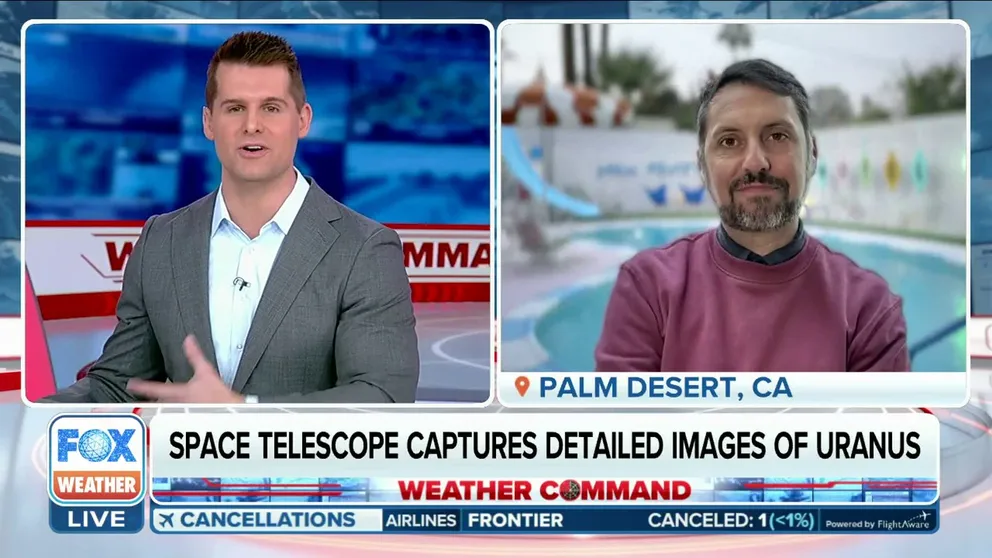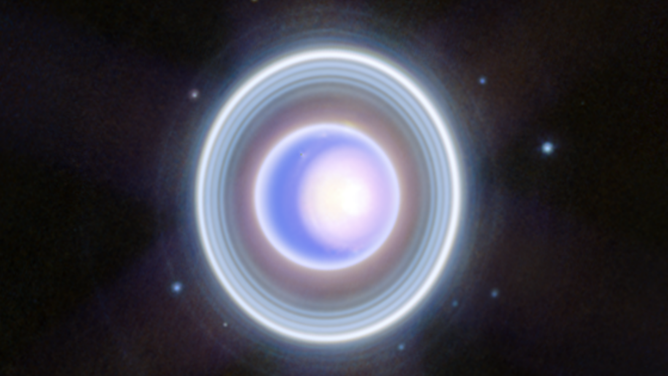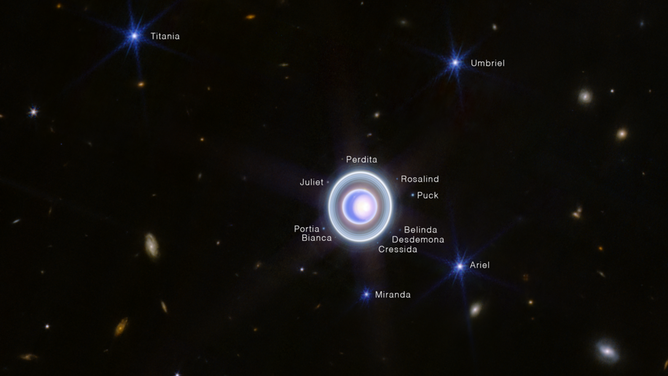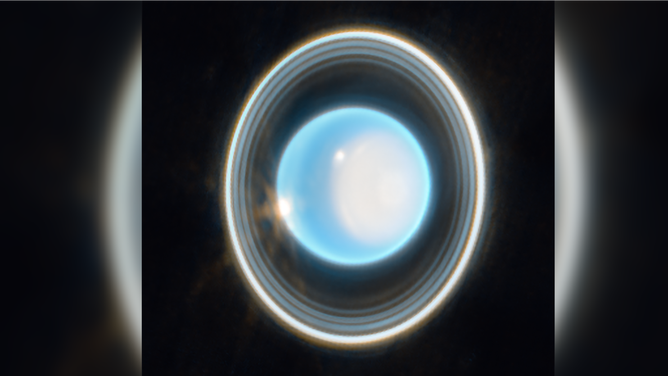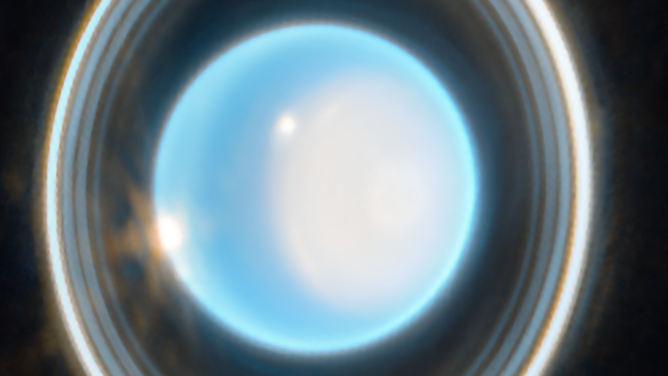Stunning images, discoveries from James Webb Space Telescope in 2023
From star nurseries thousands of light-years away to capturing our own solar system, the James Webb Space Telescope continues to exceed expectations.
See stunning images taken by the James Webb Space Telescope
The James Webb Space Telescope has released mesmerizing images of the deepest corners of our universe.
Weekly image releases from the James Webb Space Telescope (JWST) continue to inspire budding scientists worldwide and fuel discoveries about the universe.
In July, NASA, the European Space Agency (ESA) and the Canadian Space Agency (CSA) celebrated one year of the telescope being in operation. Scientists say it's just the beginning for the research and discoveries from the James Webb Space Telescope, which is expected to operate for several decades.
Here's a look at some of the highlights from Webb's observations and images released in 2023.
Celebrating another year of James Webb Space Telescope's stunning images
Kevin Hainline, one of the scientists working with the James Webb Space Telescope, says that every time they receive a photo dump from the telescope, they get to see a part of space in a new light. They are still getting over the image of Jupiter, but now they have a picture of Uranus, released just 11 days ago. They are excited to learn more about this image and what it reveals about our universe.
A dying star comes to life
Over the summer, the JWST captured the sharpest view yet of a ring nebula. According to NASA, a ring nebula is an excellent example of a planetary nebula, which includes an expanding shell of glowing gas expelled by a star late in its life.
At the end of its life, a ring nebula displays beautiful colors and details once thought to be "simple, round objects with a single dying star at the center," according to Roger Wesson of Cardiff University, part of the Evolved Stars and their Nebulae in the JWST Era, or ESSENcE, team, an international group studying planetary nebulae.
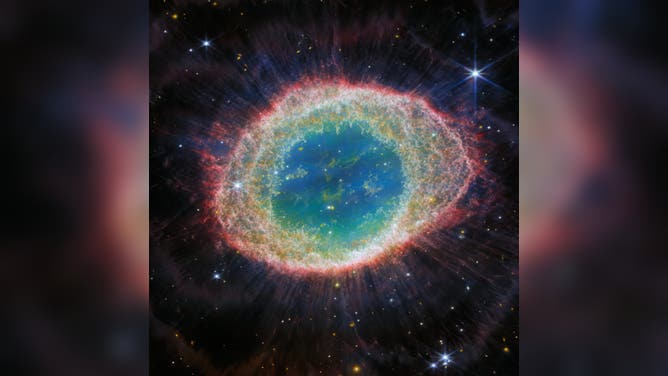
The NASA/ESA/CSA James Webb Space Telescope has observed the well-known Ring Nebula with unprecedented detail. Formed by a star throwing off its outer layers as it runs out of fuel, the Ring Nebula is an archetypal planetary nebula. (Image Credit: ESA/Webb, NASA, CSA, M. Barlow (University College London), N. Cox (ACRI-ST), R. Wesson (Cardiff University)
(NASA)
Webb’s Near-Infrared Camera (NIRCam) captured the object about 2,500 light-years away from Earth, showing new details of the structures within the celestial object known as M57 and NHC6720.
Closer to home
While the telescope continues to unfold the universe beyond our solar system, Webb captured detailed images of objects much closer to home this year.
Observations from Webb provided new weather data on Jupiter's swirling storms and more clues about the global ocean on Saturn's moon Enceladus.
Early in the year, JWST helped shine a new light on Uranus' rings and its 27 moons. JWST images in infrared light captured 11 of the ice world's 13 faint, dusty rings. NASA said the right side of the image above shows the unusual polar cap of Uranus, which appears in the summer and disappears in the fall.
NEW PHOTO OF URANUS TAKEN BY WEBB TELESCOPE SHOWS VIVID DETAILS OF 7TH PLANET
In one of the final image releases of the year, NASA shared more images of Uranus taken by JWST with incredible detail of all 13 rings and the polar region. Even the elusive Zeta ring was visible to Webb's powerfully sensitive instruments.
Stars of all ages
From dying stars to young stars and newly forming stars, Webb is capturing the intricate details of the cosmos one image at a time.
The image below, taken in May, shows a bound pair of actively forming young stars more than 1,470 light-years from Earth. Herbig-Haro 46/47 is a few thousand years old, but stars take millions of years to form fully, according to NASA.
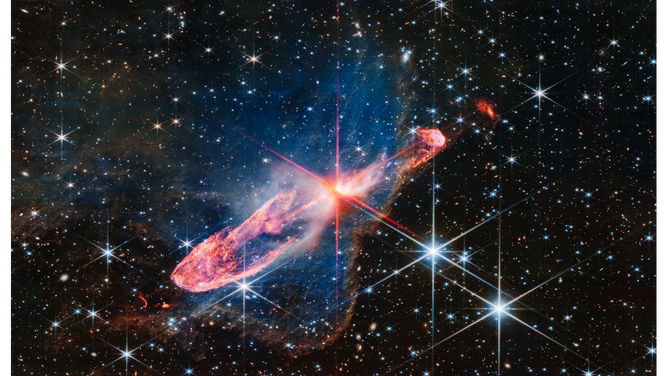
At the center is a thin horizontal orange cloud known as Herbig-Haro 46/47 that is uneven with rounded ends, and tilted from bottom left to top right. It takes up about two-thirds of the length of this angle, but is thin at the opposite angle. At its center is a red-and-pink star with prominent, eight-pointed diffraction spikes. (Image: NASA, ESA, CSA)
(NASA)
An excerpt from the Herbig-Haro 46/47 went viral on social media in August because of an orange question-mark-shaped object spotted in the image. According to the ESA, the odd-looking feature is two galaxies merging and part of the upper region is distorted.
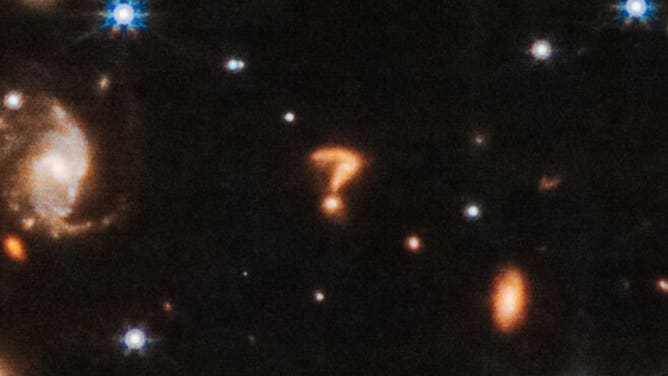
The NASA/ESA/CSA James Webb Space Telescope captured detailed infrared imagery of forming stars.
(European Space Agency / FOX Weather)
TELESCOPE SPOTS GIANT QUESTION MARK FLOATING AROUND THE COSMOS
NASA released video and images of the Rho Ophiuchi cloud complex in July for JWST's first anniversary. The picture shows the closest star-forming region to Earth, essentially a star nursery. NASA also put out a video tour of Rho Ophiuchi to showcase all the details in this image.
James Webb Space Telescope captures stellar nursery of baby stars
NASA released a new image taken by the James Webb Space Telescope of the Rho Ophiuchi cloud complex, the closest star-forming region to Earth. This video gives a tour of the complex image.
A discovery at the Orion Bar
Astronomers used the James Webb Space Telescope to detect a carbon molecule known as methyl cation in the young star system within the Orion Nebula, also known as the Orion Bar. According to the ESA, the molecule is important because it helps more complex carbon-based molecules form.
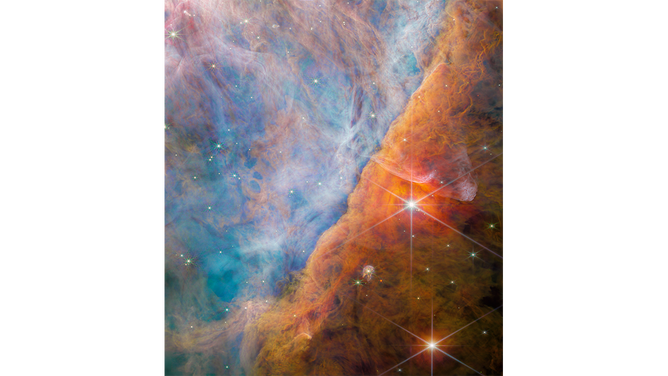
This image taken by Webb’s NIRCam (Near-Infrared Camera) shows a part of the Orion Nebula known as the Orion Bar.
The image of the Orion Bar above is a composite of several photos taken by JWST using its NIRCAM and Mid-Infrared (MIRI) instruments.
Flames from afar
The fiery image released in April shows a supernova remnant, Cassiopeia A, located inside the constellation Cassiopeia. According to NASA, the image spans 10 light-years.
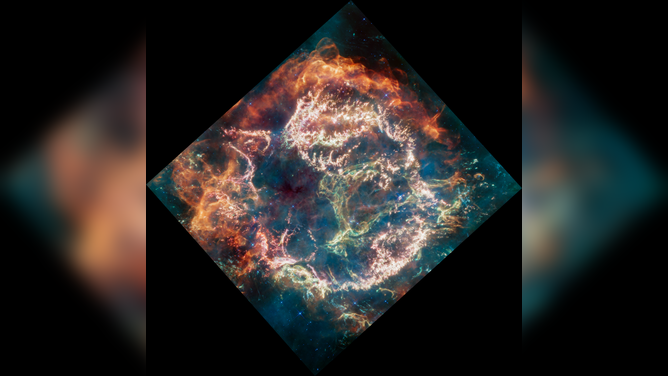
This James Webb Space Telescope image shows Cassiopeia A, a supernova remnant about 11,000-light-years from Earth in the constellation Cassiopeia. (Image credit: NASA, ESA, CSA, Danny Milisavljevic (Purdue University), Tea Temim (Princeton University), Ilse De Looze (UGent)
The materials appearing in orange and red are from emissions from warm dust.
"This marks where ejected material from the exploded star is ramming into surrounding circumstellar material," according to NASA.
Wolf-Rayet 124
The image below of one of the most luminous stars known, Wolf-Rayet 124, was actually taken by the JWST last year as part of the Webb Early Release Observations but shared publicly in early 2023.
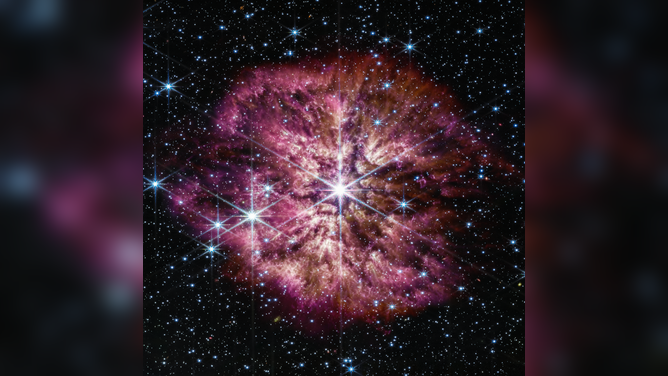
The luminous, hot star Wolf-Rayet 124 (WR 124) is prominent at the center of the James Webb Space Telescope’s composite image combining near-infrared and mid-infrared wavelengths of light from Webb’s Near-Infrared Camera and Mid-Infrared Instrument.
(NASA, ESA, CSA, STScI, Webb ERO Production Team / NASA)
Located in the constellation Sagittarius, Wolf-Rayet 124 was captured in a rare pre-supernova phase, making the observations valuable to astronomers, according to NASA.
Ice cloud chemistry
At the beginning of 2023, Webb captured an image using its NIRCam of the central region of the Chamaeleon I dark molecular cloud. The blue center of the cloud is illuminated by the glow of a protostar, and light from stars in orange helps reflect the ice in the cloud, according to NASA.

This image by NASA’s James Webb Space Telescope’s Near-Infrared Camera (NIRCam) features the central region of the Chamaeleon I dark molecular cloud, which resides 630 light years away.
(NASA, ESA, CSA )
Astronomers used the images and spectral data from Webb to complete an inventory of diverse ices in this region with important ingredients for planetary formation.
"This is the most comprehensive census to date of the icy ingredients available to make future generations of stars and planets, before they are heated during the formation of young stars," NASA said.
If you missed any of these images this year and don't want to miss another, you can view all of Webb's images and data from 2023 here. There is much more to come from Webb in the new year as scientists fine-tune their techniques with JWST and the telescope's capabilities.

